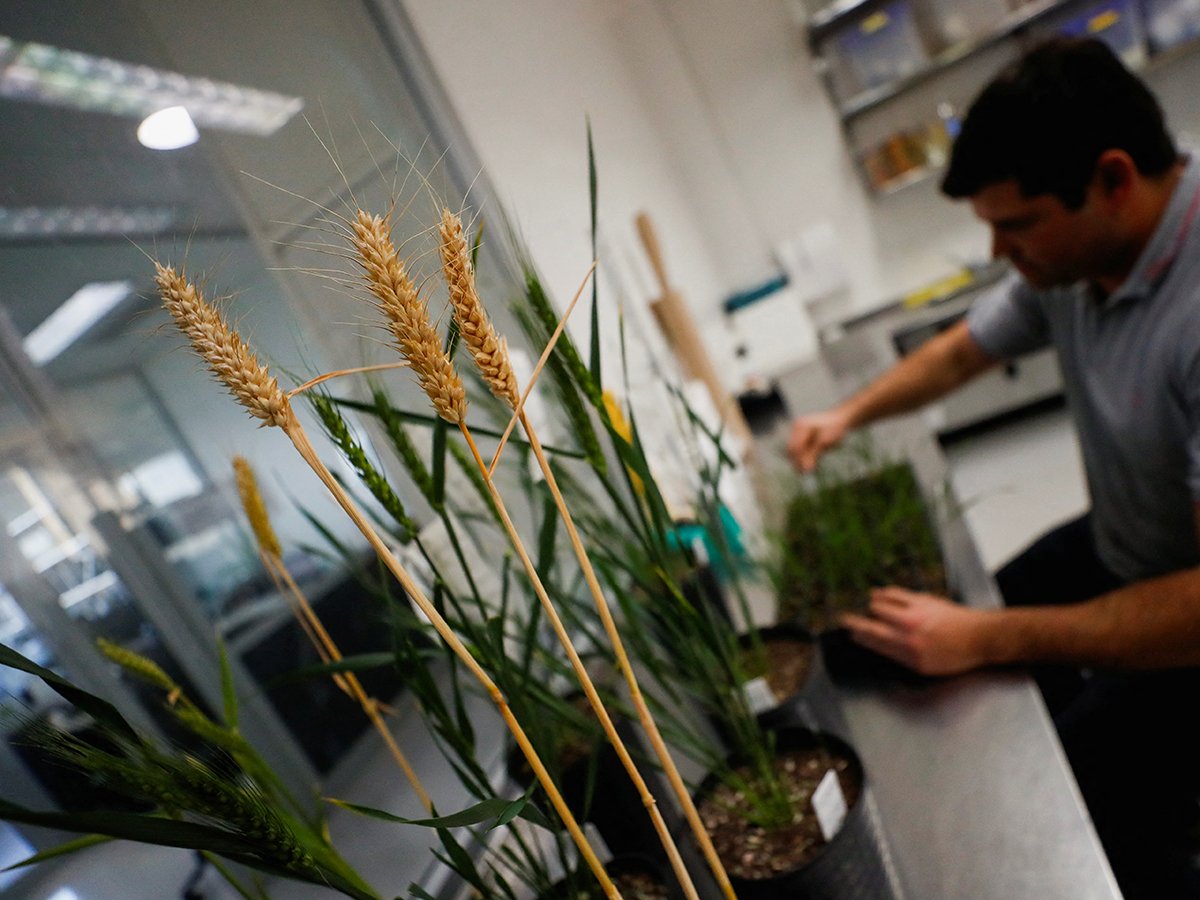REGINA – A potential $15,000 in scholarship money for junior beef producers has been offered by a Saskatchewan farm family.
Blairs.Ag Cattle Co., owned by Kevin and Noreen Blair and cousin Darren and Deb Blair, decided it was time to give something back after years of success in the agriculture business. The solution was a scholarship program to juniors who buy heifers from their Red Angus herd and then rewards them with funds every time the young person wins at a show.
“Everybody in our family thought it was time to give back to the junior program,” said Kevin Blair. The family is involved in livestock, animal nutrition products and crop protection at Lanigan, Sask.
Read Also

Genetically modified wheat gets closer to reality in U.S.
Argentine company signs deal with Colorado Wheat Research Foundation to commercialize drought tolerant wheat in the U.S.
“We wanted to do something that was so significant that it would make people stand up and listen. I believe if you have been fortunate in your life, that at some point in time you need to find a way to give back. Our family has been very fortunate over the years,” he said.
Realizing there are many activities competing for young people’s attention, the Blairs wanted to do something that kept youths involved in agriculture and encouraged them to pursue a post-secondary education.
“We were concerned we were going to lose our youth out of the purebred industry particularly. We know from our business if we can’t keep enough youth involved we are going to come to a point in time where we are going to have serious problems,” he said.
The program is open to any one under the age of 21 who registers a calf in their name and joins the Canadian Angus Association. The youths can show their purchases through 4-H, junior or open shows anywhere in Canada to earn scholarship dollars based on how well they do at the shows. They must also provide pictures of their winners to the Blairs.
To accumulate money, a young person who, for example, won a grand champion at a national Angus open show would receive $4,500. If they repeat that performance for a second year, the money goes up to $5,500 and in the final year, a possible $6,500 is deposited. Prizes for junior, 4-H or open shows are smaller but youths can enter as many as they choose.
“The more successful they are, the more dollars they can generate,” Blair said.
Each heifer purchased may be shown over three years from the time it is a calf until it produces its first calf. The youths are also allowed to buy more than one animal and the prize money is prorated. They can also go into partnership with the Blairs where they receive full possession of the animal and split any prize money.
The scholarship is triggered when they apply to a post-secondary school and receive notification of acceptance.
The family is planning a special junior sale next year offering heifer calves to juniors interested in the program.
The children must do the work themselves but they can enter agreements with parents or grandparents who want to help the young person buy a calf.
“If they buy a heifer calf, regardless, that kid will have the heifer calf that will have babies that can earn them money as well,” Blair said.
“The harder that junior works, the more sweat equity, the more opportunity to make more money out of that female comes just from their hard work.”
Xpress Ranches in the United States offers a similar program but this is the only one of its kind in Canada.















